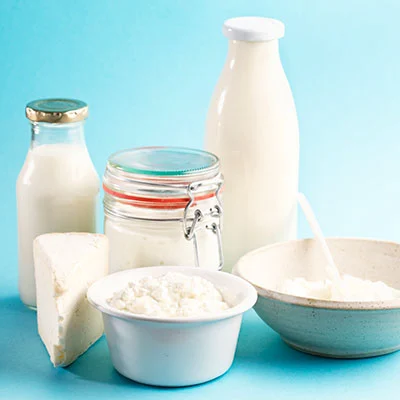Milk: An Unexpected Way to Hydrate Young Athletes
The month of August brings mixed emotions for parents and kids. Barbecues, lazy days by the pool, and backyard whiffle ball games will soon be fond memories.
However, preseason practices for various fall sports are beginning to ramp up, and soon will lead to fun fall weekends filled with cheering kids on at football games, soccer matches and more.
Young athletes are putting in hours of work on the field to get back into shape for a successful season. Perhaps equally important as this “on-field” work is properly refueling afterward and following a well-balanced diet to help ensure they are getting the nutrients they need to stay healthy, recover from their workouts and perform at their best. This is where health and wellness professionals such as registered dietitians can help.
Parents, coaches and youth athletes need top notch nutrition advice. While some popular top-of-mind nutrition considerations include eating protein to support growing muscles and carbohydrates to keep their “gas tanks” full, others may take a back seat. For example, hydration should not be overlooked, because it’s an equally important component of a balanced sports nutrition program.
I’ve learned that parents have a number of questions on this topic. Since I’m a sports nutritionist, one question I often get asked is: What should my child drink to stay hydrated? Is water all they need or should they be using sports drinks (carbohydrate/electrolyte beverages)? As with many nutrition-related questions, the answer depends, because specific recommendations will be impacted by the timing, type and duration of activity. One option often overlooked by many parents and coaches is low-fat or fat-free milk.
Milk, particularly chocolate milk, has received a considerable amount of attention in both the scientific community and mainstream press for its effectiveness as a post-exercise recovery beverage. The drink many of us loved as a kid is now being recognized as a good source of high-quality protein and carbohydrates that can help fuel an active lifestyle. Milk also provides fluids and electrolytes that support hydration. Of note, a recently published study (Volterman KA et al., 2014) in children and adolescents showed that milk can be as effective, if not more, at restoring fluid balance following a bout of cycling exercise in the heat compared to water and a carbohydrate/electrolyte drink. These findings support previous studies performed in adults (Waston P et al., 2008, Shirreffs SM et al. 2007).
This is key, because staying properly hydrated is important for the delivery of oxygen and nutrients to exercising muscles and for the dissipation of heat via sweating which helps to regulate body temperature. Dehydration causes body water loss and can negatively affect athletic performance, cause early fatigue and impair decision making on the field.
If you’re looking to learn more hydration, the American College of Sports Medicine, American Academy of Pediatrics, and Sports, Cardiovascular and Wellness Nutritionists (SCAN, a practice group within the Academy of Nutrition Dietetics) all provide similar recommendations regarding fluid intake before, during and after exercise. These easy to read fact sheets developed by SCAN provide specific guidelines for the child athlete and teen athlete and are a great resource.
So here’s what I suggest to my fellow colleagues who interact with coaches and parents: recommend low-fat or fat-free milk as an option to help meet the child athlete’s fluid needs following exercise. Not only does it taste great, and check key recovery nutrition boxes (protein, carbohydrates, fluids and electrolytes), it also provides 13 essential nutrients important for overall health.















